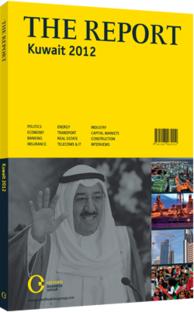Inflationary pressure: Monetary policy is aimed at boosting growth and investment
Like many other GCC states, Kuwait has experienced rising inflation over the past two years as the country has recovered from the global economic crisis, and as oil, food and commodity prices have risen worldwide. Nevertheless, inflation is not expected to reach pre-crisis highs in the near term, and the government has maintained an accommodative fiscal and monetary policy to stimulate economic growth and private sector investment.
HIGHS & LOWS: For much of the 1980s and 1990s, average GCC inflation rates ranged between zero and 2%, as regional governments maintained an impressive level of price stability. However, this picture drastically changed in the early 2000s as a result of the global rise in oil and food prices, as well as the weakening of the US dollar, to which all GCC nations had pegged their currencies. From 1999 to 2008, aggregate GCC inflation rose from near 1% to 11.6%, an all-time high that surpassed the previous GCC peak of 9.4%, which had been set in 1982.
Kuwait shared these highs and lows – inflation in the country reached 5% in 2007 and 10% in 2008 – but began charting its own path in mid-2007, when the country dropped the dinar’s peg to the dollar for a basket of currencies including the dollar and the euro. This gave the Central Bank of Kuwait (CBK) more flexibility to manage liquidity and tackle inflation by altering exchange and interest rates. In addition, in 2008 the central bank tightened lending requirements by enforcing an 80% loan-to-deposit limit, and began issuing new regulations lowering the amount that banks could loan to consumers.
When the crisis hit in September 2008, the policy dynamic changed again, prompting the CBK to reverse course and begin easing credit conditions and cutting rates. Meanwhile, as economic growth slowed in the GCC and worldwide, and as global prices for oil, real estate and commodities declined, inflation in Kuwait fell to 3.8% in 2009 and down to 2.8% in January 2010. This matched the experiences of other GCC nations during the downturn, with overall inflation in the region hovering around 3% for most of 2010.
INFLATION RETURNS: In 2010 and 2011, the restoration of economic growth in Kuwait and the GCC has invited the return of inflationary pressures. In November 2010 inflation hit a 22-month high in Kuwait, at 5.9%, before settling at 5.3% in April 2011. Total inflation for the year rounded out at 4.8% — a three-year high. This figure is the second-highest in the GCC, just behind Saudi Arabia, which recorded 4.9% in 2011.
According to projections from the National Bank of Kuwait (NBK), in the coming years, inflation will climb from 3% to 5% in Oman, 1% to 3% in the UAE, 2% to 3% in Bahrain, and to 5.5% in Saudi Arabia.
Given that GCC countries rely heavily on agricultural imports, the climb in regional inflation is directly tied to food prices, which have spiked due to poor weather conditions in leading crop-producing nations, heightened demand and higher transport surcharges linked to rising energy costs. According to a recent report from Alpen Capital, this trend has been most pronounced in Kuwait, where food inflation has risen from 5% in January 2010 to 10% in January 2011. In large part this trend reflects the prominent role food prices play in Kuwait’s consumer price index (CPI).
Whereas the UAE and Qatar calculate CPI by weighing food prices at roughly 13%, Kuwait gives food prices a CPI weight of 18.3%. Overall, Kuwait’s CPI has risen from approximately 138.9 in the first quarter of 2010 to 146.1 in the first quarter of 2011.
Although there is relatively little the government or the central bank can do to reduce imported food inflation, food prices in the region may begin to stabilise or even fall during 2012. In addition, the overall inflation rate in Kuwait is not likely to exceed 6% in the short term. Given this limited inflation risk, the government is expected to maintain a loose monetary policy to promote lending and economic growth, in line with the expansionary fiscal policy it has adopted under the current National Development Plan.
You have reached the limit of premium articles you can view for free.
Choose from the options below to purchase print or digital editions of our Reports. You can also purchase a website subscription giving you unlimited access to all of our Reports online for 12 months.
If you have already purchased this Report or have a website subscription, please login to continue.

